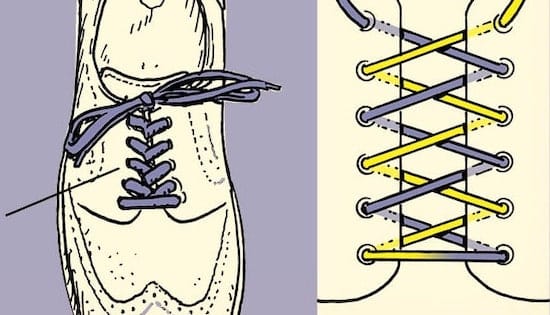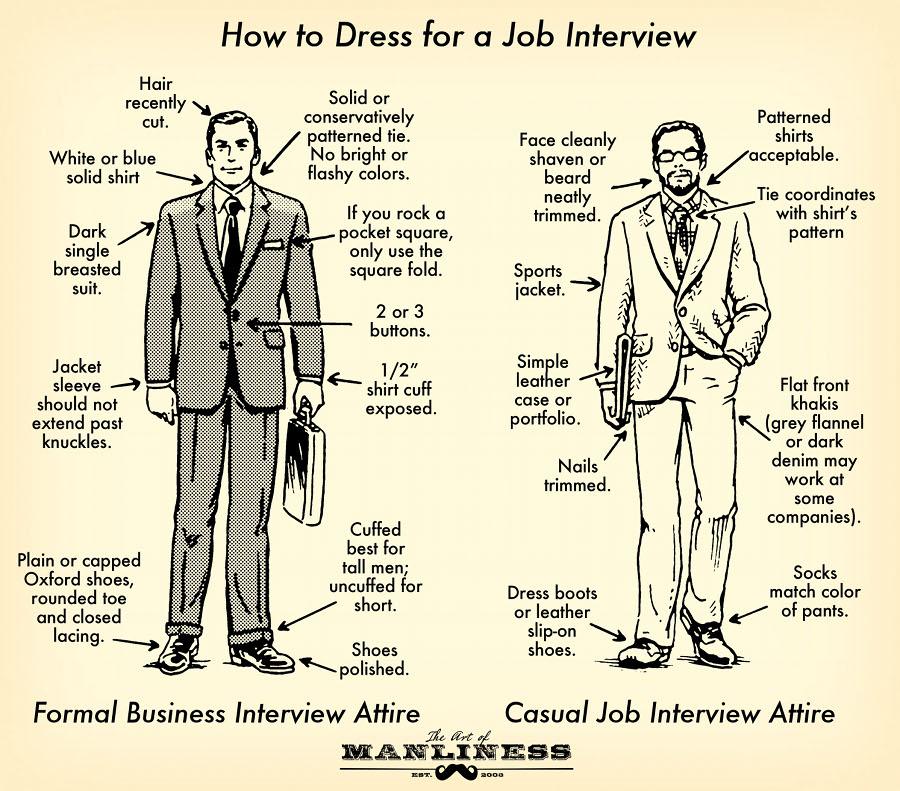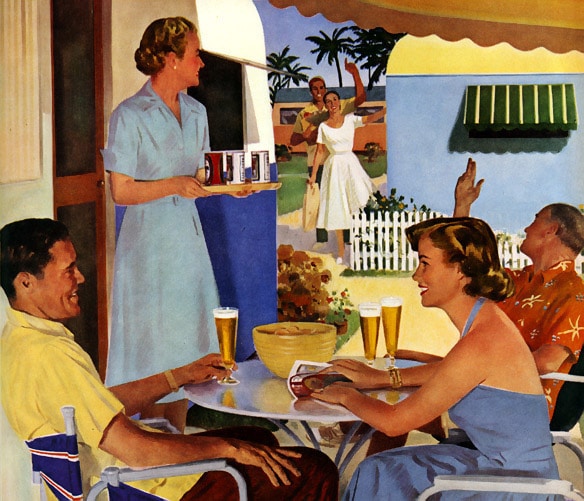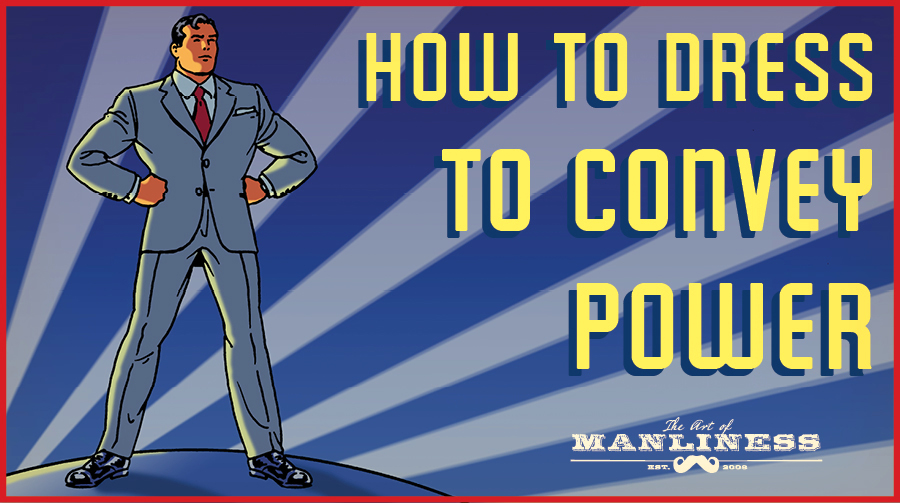
Style is a language: The clothing you wear speaks volumes about you long before you open your mouth, and talks to everyone around you, whether you actually exchange words or not. Research has conclusively shown that how you dress not only changes how you feel about yourself, but how others interact with you as well.
What you want your clothes to “say” depends on the situation and the impression you want to make. Sometimes you simply want your clothes to convey your personality and your general sense of ease.
Other times, you choose your clothes strategically, in order to create a certain effect — in order to give yourself a certain advantage.
One of those times is when you’re in a negotiation setting — when you find yourself in a situation where you need to bring two sides together and project trustworthiness and confidence in your judgment.
Today we’ll take a look at how to put together this kind of “negotiator outfit.”
The Message: What a Negotiator Outfit Says
This is the outfit you wear when you’re trying to convey a message of trust and competence:
- “You want me involved with this.”
- “You can rely on my judgment.”
- “I’m trustworthy.”
The negotiator style is worn when convincing people (but not selling them something — that’s a different message) is the paramount goal. You don’t necessarily need to look like a leader, and in fact you want to actively avoid too much of a “power” look; instead, you’re trying to project the image of a steady, sensible consensus-builder.
For obvious reasons, you’ll often see classic “negotiator” outfits on politicians and therapists, as well as on media figures, consultants, public relations specialists, and some lawyers.
“You Want Me Involved” — How to Look Indispensable
Whether they’re being paid to engineer a specific deal or not, negotiators need everyone at the table to think that it can’t be done without this specific individual helping out. A subtle authority flows from that aura of indispensability.
Creating that aura is the art of looking excellent without looking flashy. It’s not just about being perfectly put together — you have to be quietly perfect:
- Whenever possible, wear a suit. For high-formality settings that means a dark business suit (navy blue or charcoal gray). Anywhere that would be too formal, wear a lighter suit, like a medium gray or a muted Glen plaid.
- Wear a good sports jacket and a collared shirt with slacks if your setting is absolutely too informal for a suit (and very few are — even a labor dispute at a factory usually sees suits at the negotiating table). Avoid blue jeans and uncollared shirts.
- Neckties say “I’m here on official business.” Wear one, unless the setting is so casual that it would look deeply out of place.
- What you arrive in is what people judge first, so have quality outer pieces, accents, and accessories (like an overcoat, scarf, umbrella, etc.) to go with your outfit. Similarly, your briefcase should be simple but top-notch (and you should be using a briefcase, not a backpack or messenger bag).
Someone who can project quiet authority — the sense that your opinion matters, but that you don’t need to force it on anyone else — is someone who’s going to have a lot of success at the negotiating table. So dress sharp, but don’t dress aggressive.
“You Can Rely on My Judgment” — How to Appear Dependable
People involved in a negotiation are looking for someone they can trust, whether it’s a discussion between two county supervisors trying to settle a boundary issue together or a struggling couple’s attempts to reconcile through a marriage counselor.
Negotiations only happen when someone’s unhappy — in an everyone’s-satisfied situation, you’re not donning the negotiator’s outfit. Therefore, you want to dress in a way that projects reassurance, which will in turn subconsciously reassure people that your judgments and pronouncements are sound:
- Sharp, flat outlines and surfaces unsettle people. Wear a suit (or jacket) with a slightly softer cut, like the traditional American sack suit (one with a slightly looser fit). Razor-edged shoulders or a sharp, slimming taper at the waist looks snappy, but it’s too intense for your purposes.
- Similarly, try for fabrics with a little bit of texture to them. Flannel and tweed wools look “softer” than their worsted cousins. A superfine worsted so smooth it shines is, again, a little too sharp-looking for the negotiator.
- Getting your details right assures people of your competence. So have your shoes shined and your shirts pressed, and wear a suit that’s been custom-fitted to your measurements.
- Quality influences perceptions. If your suit is made from a soft, heavy wool of the highest quality, it makes you (and therefore your judgments) seem more “important” than if you’re wearing a light, cheap suit.
The best way to look dependable is, of course, to be dependable, so do other things that emphasize your reliability as well: wear a good wristwatch instead of having to check your cell phone or a wall clock for the time, show up earlier than everyone else, and bring not only a pen and paper for yourself but some spares for people who didn’t think about it.
“I’m Trustworthy” — How to Appear Trustworthy
Trust is a slippery beast. A reputation that precedes you can help, of course, but if you’re dealing with people who don’t know you from Adam, your wardrobe has to do all the work on its own.
Like the reassuring look, the trustworthy look is heavily based in things that people find soothing and comfortable to look at:
- Browns and other earth tones have been repeatedly found in scientific studies to inspire more trust than sharp, bright colors. Thus, a soft gray suit (or a brown one where appropriate) is vastly preferable to blue or black, a cream shirt is preferable to bleached white, and so on.
- Neckties should be similarly restrained. Brown is good, as are muted yellows and oranges. If you choose a “brighter” color like red or blue, wear a very dark, sober shade like burgundy or navy blue, and temper it with some patterning.
- Avoid anything that seems very sharp-edged and authoritative. You might fold your pocket square into an insouciant puff rather than a crisp horizontal line, for example, or opt for a very lightly-styled comb-over instead of a heavily-gelled center part in your hair.
- Gold-metaled accents seem “warmer” than silver ones, and brown leather seems “warmer” than black. You may not get a choice on the latter — strict business attire demands black leather — but you can always opt for gold-toned accents like belt buckles, watch faces, etc.
Along with your outfit, you can of course modify your voice, your face, your body movements, and other subtle cues to make yourself seem calm, moderated, and firm of principle — but all of these will take effect later than your first, silent, visual impression.
Your clothes make that for you, so choose them well.
_________________________________________
Written By Antonio Centeno
Founder, Real Men Real Style
Click here to grab my free ebooks on men’s style







